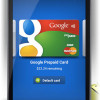Review: Samsung Galaxy Nexus for Verizon Wireless
Screen
The Galaxy Nexus sports a luscious 4.65-inch 1280 x 720 Super AMOLED Plus display. With true HD resolution, it looks amazing. Individual pixels are invisible, rendering text, icons, and graphics cleanly. (Eric felt the display was smooth and free of rough edges, but Rich felt the PenTile display was bothersome from time to time.) It is also dazzingly bright. Set to the highest output, the Galaxy Nexus is easily usable outdoors for functions such as the camera, or checking the time. Indoors, it is a beacon; a lighthouse of information. The controls take up a bit of the display's real estate, though, reducing the usable size down to something more like 4.3 or 4.4 inches.
Signal
The Galaxy Nexus works on Verizon's older 3G network for voice and data, and its newer LTE network for data, when LTE service is available. As far as performance on Verizon's 3G network, the limited tests I was able to run today show it to be a below average device. It typically displayed fewer bars than other Verizon phones being used in the same location. During my short time with the Galaxy Nexus, it didn't drop any calls, but data sessions ranged wildly from zippy to a full stop.
I spent about an hour testing the Galaxy Nexus in an area covered by Long Term Evolution. With a 4G signal, the Galaxy Nexus performed fairly well. I had no trouble connecting and surfing the web. I was able to pull up web sites quickly, and the Galaxy Nexus didn't drop the 4G network until I left the area.
Sound
Call quality with the Galaxy Nexus was not that good. The earpiece speaker produces fantastic levels of volume with no distortion, but the voices were often garbled and there was a consistent background hiss. Voices faded in and out, and I noticed a significant echo a few times. Calls routed to the speakerphone amplified these problems. The speakerphone can be set to concert-level volumes, but when set all the way up, the speaker distorts badly, rendering the extra volume somewhat useless. The ringtones and alert tones can be set to incredibly loud levels, reducing the chances of missing a phone call. The vibrate alert, however, could easily go unnoticed.
Battery
After setting up the phone (initial sync the first day with Google's servers) and charging it to 100%, I was able to drain the battery fully in about 12 hours with only one hour of LTE use. I used the device quite heavily during those 12 hours (email, web browsing, testing apps, and so on), similar to what I do when testing most devices. Charging the phone over night, I unplugged it the second day at about 9AM. When I went to bed at midnight, it had 33% power left. I used the device heavily (camera, video camera, browser) for several hours, then used it sporadically the rest of the day. At this point it appears as though the device needs to be charged every night.


 Hands-On: Android 4.1 Jelly Bean
Hands-On: Android 4.1 Jelly Bean
 Sprint Officially Reveals Galaxy Nexus
Sprint Officially Reveals Galaxy Nexus
 Samsung Galaxy Nexus (LTE)
Samsung Galaxy Nexus (LTE)




